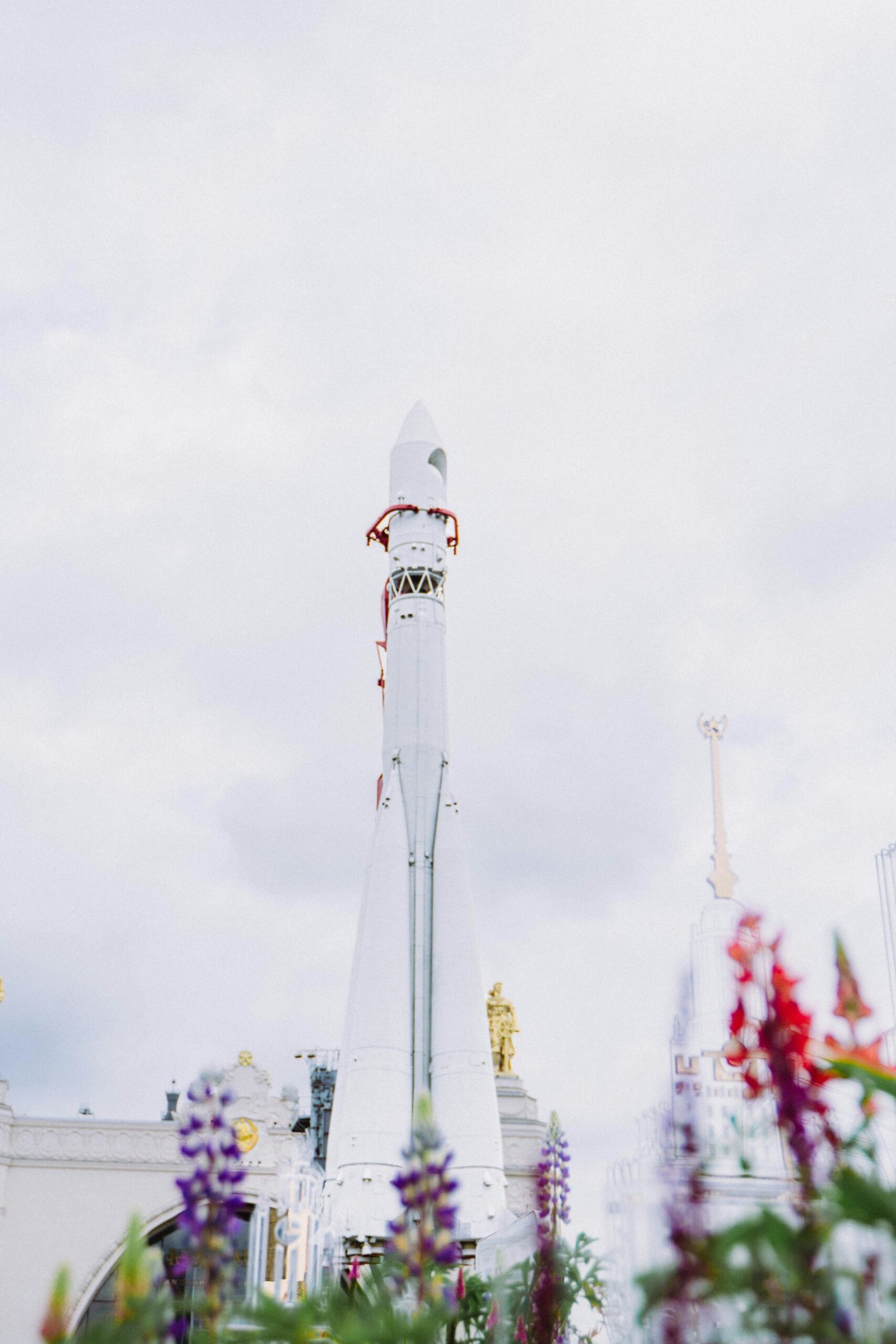Introduction to Robots in Space Exploration
The evolution of robotic technology has played a pivotal role in the advancement of space exploration. From the earliest ventures beyond Earth’s atmosphere, robots have emerged as indispensable assets that facilitate an array of scientific missions. The genesis of robotic space exploration can be traced back to the mid-20th century, amidst the Cold War era when competition in space technology intensified. This backdrop saw the inception of automated spacecraft designed to collect data and conduct experiments beyond the reach of human hands.
One of the significant milestones in the history of robotics in space was the launch of the Soviet Union’s Luna 2 in 1959, marking the first human-made object to reach the Moon. This event heralded the introduction of automated machines as viable tools for celestial investigation. Furthermore, the subsequent deployment of the Ranger, Surveyor, and Lunar Orbiter programs by NASA in the 1960s underscored the growing reliance on robots for exploration. These robotic missions provided crucial data that laid the foundation for future human interventions on the lunar surface.
As technology progressed, so did the capabilities of robotic systems. The introduction of rovers, like the Sojourner in 1997, revolutionized our ability to conduct experiments on the Martian terrain. Robots not only performed tasks on-site but also transmitted invaluable information back to Earth, allowing scientists to analyze findings remotely. The successful deployment of robotic systems paved the way for sophisticated exploratory tools that could endure harsh environmental conditions found on other celestial bodies.
Overall, the history of robots in space exploration encapsulates a remarkable journey marked by innovation and collaboration. The early implementations of robotic technology laid the groundwork for an array of advancements, helping shape our understanding of the universe and our place within it. As robotic systems continue to evolve, they are expected to play an even more significant role in future space missions, promising to unveil the mysteries of the cosmos.
The Pioneering Days: Unmanned Spacecraft
The exploration of space has long been a frontier of human curiosity and ambition, with unmanned spacecraft playing a critical role in the initial phases of this endeavor. Among the seminal projects, the Soviet Union’s Luna program, which began in the late 1950s, stands out as one of the earliest examples of robotic technology applied to space exploration. The Luna spacecraft, nearly a dozen missions in total, were designed for various objectives, including the first human-made object to impact the Moon, which occurred in 1959 with Luna 2. This mission epitomized the capabilities of unmanned spacecraft in radiation measurement and lunar surface analysis, paving the way for future scientific pursuits.
In addition to the Luna missions, the American Voyager spacecraft, launched in 1977, marked another significant leap towards deep space exploration. Voyager 1 and Voyager 2 were equipped with sophisticated instruments that allowed them to travel beyond our outer solar system, gathering invaluable data about planets such as Jupiter, Saturn, Uranus, and Neptune. The Voyager missions demonstrated the efficiency and robustness of robotic technology; they could withstand extreme temperatures, radiation, and communication delays that are inherent in space environments hostile to humans.
Through the use of advanced robotics, these unmanned spacecraft have provided a wealth of knowledge, enabling scientists to collect data that would have been impossible to obtain through human-led missions. The technology incorporated into these early robotic spacecraft not only facilitated groundbreaking discoveries such as the intricate details of planetary atmospheres and surfaces but also set a precedent for future space exploration missions. Ultimately, the pioneering days of unmanned spacecraft highlight the essential role that robots play in unlocking the mysteries of space, expanding our understanding of the universe while minimizing the risks associated with human travel in inhospitable environments.
Robots on the Moon: The Lunar Landers
The exploration of the Moon has marked significant milestones in the history of space exploration, particularly with the deployment of robotic vehicles. The Apollo program, initiated by NASA in the 1960s, included the use of the Lunar Module, a self-sufficient spacecraft designed to land on the Moon’s surface. This vehicle, which facilitated crewed missions, was an early example of robotics in action, showcasing the engineering ingenuity of the time. The Lunar Module not only transported astronauts but also played a crucial role in conducting scientific experiments and collecting lunar samples, fundamentally enhancing our understanding of the Moon’s geology and environment.
Following the crewed missions of the Apollo program, robotic exploration continued with the introduction of unmanned rovers. Notably, the Soviet Luna program deployed several robotic missions, such as Luna 16, which successfully returned lunar soil samples to Earth. These missions paved the way for intricate designs and advanced functionalities, as they were equipped with tools to analyze the lunar regolith and transmit valuable data back to Earth. The Lunokhod rovers, launched in the early 1970s, were particularly significant as they were the first remote-controlled robotic vehicles to explore the lunar landscape, traversing the surface and conducting a variety of scientific measurements.
Through their design and functionality, both the Lunar Module and the unmanned rovers demonstrated the capabilities of robotics in harsh extraterrestrial environments. The successful missions have provided not only critical scientific insights but also laid the groundwork for future lunar exploration endeavors. The integration of robotics in these missions exemplifies the necessity and efficacy of robotic technology in expanding our horizons beyond Earth, emphasizing their crucial contributions to our understanding of the Moon.
Mars: The Red Planet and Its Robotic Explorers
Mars, often referred to as the Red Planet due to its reddish appearance, has been a focal point of space exploration for decades. The unique geological features and the potential for past or present life make Mars an ideal candidate for robotic exploration. Numerous rovers have successfully traversed its surface, each contributing invaluable data that has reshaped our understanding of this intriguing planet.
The first successful rover to land on Mars was Spirit, part of NASA’s Mars Exploration Rover mission, which landed in January 2004. Spirit’s mission was to explore the Gusev Crater, and it provided critical evidence of the planet’s past volcanic activity and water history. Following closely, Opportunity was deployed to the Meridiani Planum region and drastically exceeded its life expectancy, operating for nearly 15 years. Both rovers discovered hematite, supporting the notion that liquid water once existed on Mars, thereby deepening the search for potential life.
Building on the successes of its predecessors, Curiosity landed on Mars in 2012 as part of the Mars Science Laboratory mission. Equipped with advanced scientific instruments, Curiosity analyzed the Martian soil and rock samples, investigating the planet’s climate and geology. One of its significant findings was the identification of ancient freshwater lakes, reinforcing the hypothesis that Mars may have once supported microbial life.
The latest advancement in Martian exploration is represented by the Perseverance rover, which landed in February 2021. This groundbreaking mission aims to seek signs of ancient life and collect rock samples for potential return to Earth. Moreover, Perseverance carries a helicopter, Ingenuity, which represents the first powered flight on another planet, marking a significant milestone in the use of robotic technology in space exploration.
Through these robotic explorers, humanity has expanded its knowledge of Mars, yielding insights into its atmosphere, geology, and potential for habitability. As technology continues to evolve, the mission to unravel the mysteries of the Red Planet continues to inspire future endeavors that may one day answer the age-old question of whether we are alone in the universe.
Space Telescopes: Observing the Universe from Afar
Robotic telescopes have revolutionized our understanding of the universe, enabling astronomers to observe celestial phenomena in unprecedented detail. Among these groundbreaking instruments are the Hubble Space Telescope and the James Webb Space Telescope, both of which have played pivotal roles in advancing cosmology and astrophysics.
The Hubble Space Telescope, launched in 1990, was the first major optical telescope placed in space. By avoiding Earth’s atmospheric interference, Hubble has provided stunning images and invaluable data, leading to significant breakthroughs in our understanding of the cosmos. One of its landmark discoveries includes the determination of the rate of expansion of the universe, a vital aspect in cosmology. Hubble’s observations have also illuminated the existence of exoplanets, better informing our search for extraterrestrial life.
Following Hubble, the James Webb Space Telescope, launched in December 2021, has taken robotic space exploration to new heights. By utilizing infrared technology, Webb can observe celestial objects that are too faint or distant for Hubble. This capability allows scientists to peer further back in time toward the early universe, providing insights into galaxy formation and evolution. Webb’s advanced instruments also enable it to examine the atmospheres of exoplanets, offering potential clues about their habitability.
Both the Hubble and James Webb Space Telescopes represent monumental steps forward in space science, enhancing our understanding of the universe’s structure, origins, and potential for life beyond Earth. Their wide-ranging impacts highlight the importance of robotic technology in space exploration, fostering knowledge that continues to shape modern astronomy and enrich our comprehension of the cosmos.
Robotic Arms and Assistance in Space Missions
Robotic arms have become an integral component of modern space exploration, significantly enhancing the capabilities of missions such as those conducted on the International Space Station (ISS). These advanced robotic systems serve multiple purposes, from assisting astronauts in their daily tasks to conducting complex repairs and scientific experiments. Their versatility is evident in a variety of applications, demonstrating how automation is pivotal to maintaining a long-term human presence in space.
One prominent example of the use of robotic arms in space missions is the Canadarm2, which has been instrumental in the construction and maintenance of the ISS. This sophisticated robotic system allows astronauts to remotely operate the arm to capture and maneuver cargo spacecraft, making the logistics of maintaining the station considerably more manageable. The collaboration between robotic systems and human operators optimizes efficiency and ensures that the ISS continues to function seamlessly in orbit.
In addition to aiding in transport tasks, robotic arms are essential for performing precise scientific experiments. For instance, they can manipulate sensitive instruments, analyze samples, and execute tasks in environments that would be hazardous for human astronauts. This capability not only enhances safety but also increases the scientific yield of missions, allowing researchers to gain valuable insights while minimizing the risks associated with prolonged human exposure to space conditions.
Furthermore, robotic arms play a crucial role in facilitating repairs that are necessary to extend the operational lifespan of space equipment. By deploying these robotic systems, astronauts can complete intricate maintenance tasks that may otherwise pose significant challenges, ensuring the continued functionality of critical components aboard the ISS. Integrating robotic technology into space missions exemplifies the transformative potential of automation, streamlining processes, and fostering a more sustainable exploration of outer space.
The Future of Robotic Space Exploration
The future of robotic space exploration holds exciting possibilities that could redefine our understanding and engagement with the cosmos. As advancements in technology continue to accelerate, it is anticipated that autonomous drones, equipped with sophisticated sensors and artificial intelligence, will play a vital role in missions to other planets. These drones will enable scientists to collect unprecedented data while navigating complex terrains that would be challenging for traditional rovers.
In addition to exploring planetary surfaces, robotic prospecting on asteroids is becoming increasingly plausible. Asteroids, rich in minerals and metallic resources, present unique opportunities for resource utilization. Future missions could deploy robotic systems to assess, extract, and transport materials back to Earth or use them in-situ for space missions. This capability could support longer space missions and reduce reliance on terrestrial resources, marking a significant evolution in our approach to space exploration.
The potential role of robots in crewed missions to Mars is particularly notable. Robotic systems could serve as essential assistants to astronauts, handling tedious tasks, conducting repairs, or serving as companions during long-duration missions. By utilizing robots to manage environmental challenges, such as radiation and dust storms, crewed missions could see increased safety and efficiency. Moreover, the data gathered by these robots can greatly inform mission planning and enhance the understanding of Martian geology and potential habitability.
As we look forward to these groundbreaking innovations, the integration of robotics in space exploration not only aims to advance scientific knowledge but also endeavors to inspire future generations to consider the possibilities of human presence beyond Earth. The collaboration between robots and humans will likely shape a new era of exploration, broadening our horizons as we seek to uncover the mysteries of our solar system and beyond.
Challenges and Limitations of Robotic Spacecraft
Robotic spacecraft face a myriad of challenges and limitations that significantly influence their design and functionality. One of the primary technical limitations involves the constraints of current propulsion systems, which can affect the speed and maneuverability of these space-faring machines. The vast distances in space make it essential for spacecraft to have efficient propulsion, yet most existing technologies have not achieved speeds that allow for rapid exploration of outer celestial bodies. Consequently, mission planners often have to design missions that accommodate extensive travel times, which can take years or even decades to reach their destination.
Communication delays represent another significant challenge for robotic spacecraft. The distance between Earth and celestial bodies creates a lag in communication, which can complicate mission operations. For example, a signal sent from Earth to Mars can take anywhere from four to twenty minutes to arrive, depending on their relative positions. This delay impacts the ability of scientists and engineers to respond to unexpected issues in real-time, necessitating a high level of autonomy in robotic systems. To address this, advancements in artificial intelligence (AI) are being integrated into spacecraft systems, allowing them to make decisions based on pre-defined parameters and real-time data.
Environmental conditions in space pose distinct challenges as well. Robotic spacecraft must endure extreme temperatures, radiation, and micrometeoroid impacts that can compromise their structural integrity and functionality. Each of these factors necessitates robust engineering solutions, which can be costly and complex. Moreover, these conditions often inform mission designs, requiring adaptability and durability from the robotic systems employed. Ongoing research focuses on overcoming these limitations through enhanced materials, novel engineering techniques, and improved AI capabilities to ensure that future robotic missions can achieve their scientific objectives effectively.
Conclusion: Reflection on Robotics in Space Exploration
Throughout the exploration of space, robots have played an integral role, significantly enhancing our understanding of the cosmos. From the early missions of the Mariner spacecraft to the recent advancements of autonomous rovers on Mars, robotics has enabled us to traverse environments that would otherwise be inhospitable to human life. The focus on robotic technology in space has not only led to groundbreaking discoveries but has also laid the groundwork for potential human missions to other planets.
One of the pivotal contributions of robots in space exploration includes their ability to gather and transmit data from remote locations. This has allowed scientists to analyze vital information about distant celestial bodies without the immediate risk associated with human presence. By sending sophisticated robotic systems, we have been able to explore areas such as the surface of Mars, the moons of Jupiter, and the asteroid belt, expanding our knowledge beyond the limitations of human capacity. Through these efforts, we have gained insights into the formation of our solar system, the presence of water, and the potential for life beyond Earth.
The continual advancement of robotics in space promises an exciting future. As technology evolves, we can anticipate more sophisticated robots that can undertake complex tasks autonomously, furthering our explorations. This pioneering spirit of robotics is crucial for preparing the pathway for human exploration of Mars and beyond. In embracing the capabilities of these machines, we effectively extend our reach into the universe while simultaneously developing technologies that can benefit life on Earth.
Ultimately, the trajectory of space exploration is deeply interconnected with the advancement of robotics. As we reflect on the history and accomplishments of robotic missions, it is evident that these innovations have become foundational elements in our quest to uncover the mysteries that lie beyond our planet.



